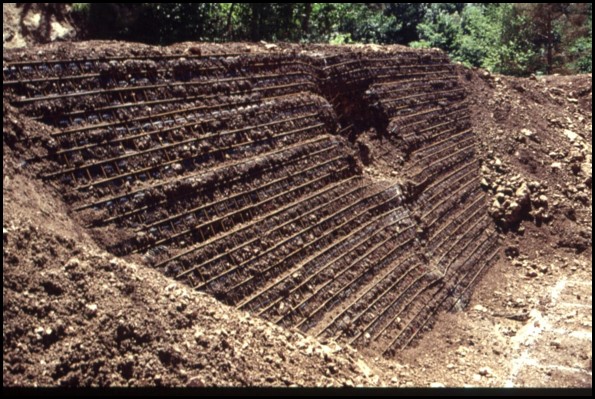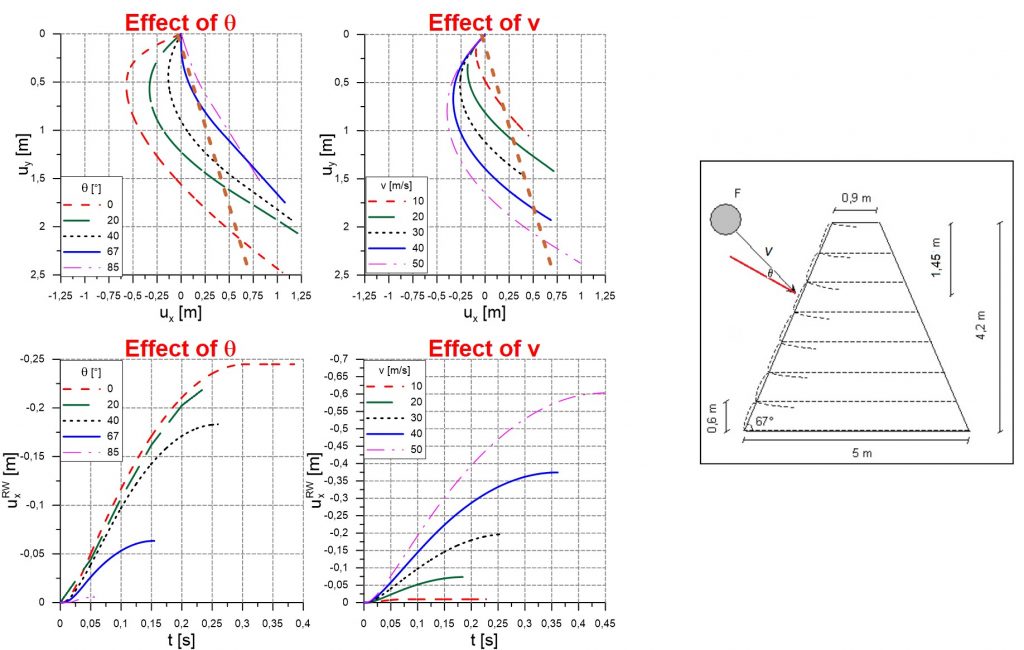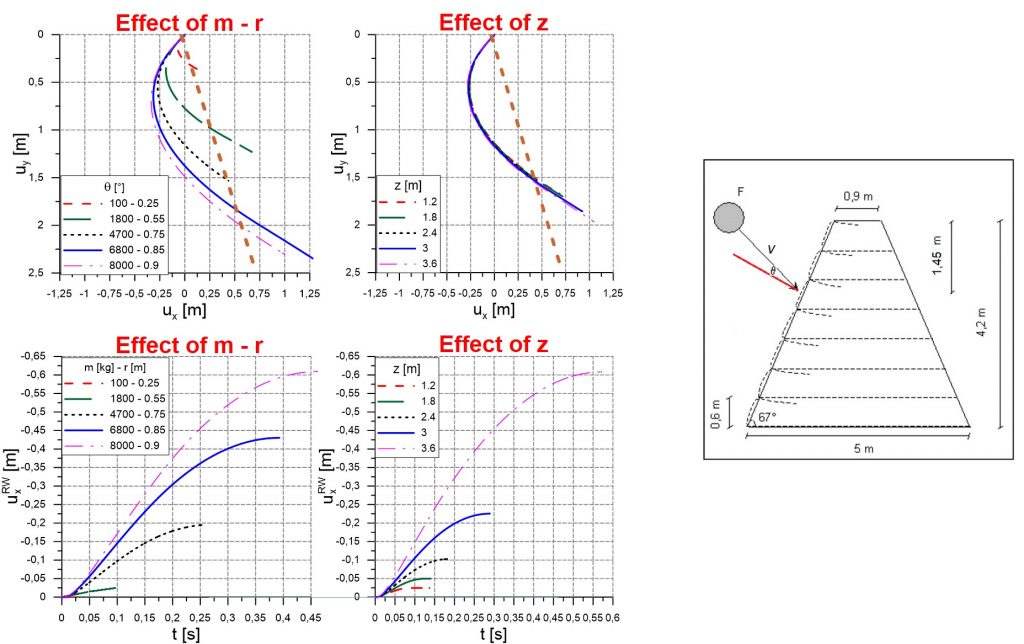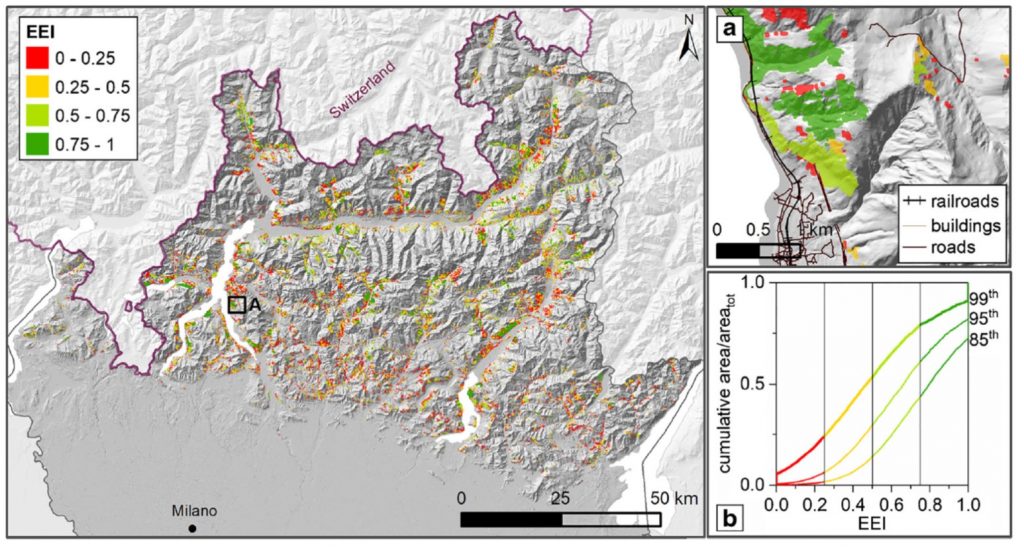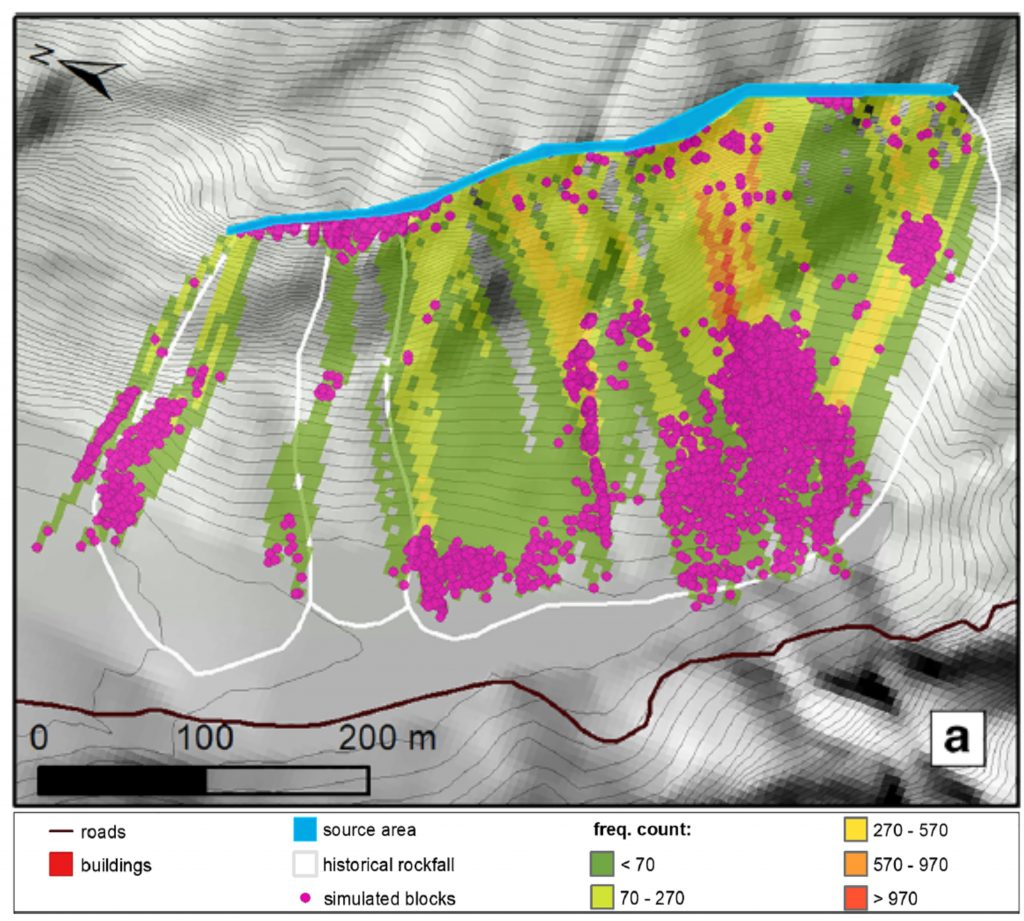Objectives
The WP will be developed in three sub-actions:
3.1) The fully 3D code Hy-STONE will be implemented by introducing new impact laws for rebound and for the impact with structures and trees. Moreover, the possibility to simulate non symmetrical/irregular prismatic bodies will be implemented. The fragmentation process will be modelled by using simplified fracture mechanics approaches. This will allow to obtain more realistic results, in particular in case of impacts characterized by high energetic contents.
3.2) A new dedicated modelling tool will be developed from Hy-STONE for regional agencies. The tool will include most useful and basic features of Hy-STONE, and will allow regional agencies to fully run simulations for single case studies and for the analysis of risk and mitigation measure cost and benefits.
3.3) Design procedures for the use of reinforced embankments as mitigation measures will be provided. In fact, these type of structures is quite common but up to now convincing and well established approaches are not yet available in the literature.
Results
Definition of impact law
1) Simulation of impacts of spherical bodies against granular media with the use of a DEM numerical code (PFC3D)
- vertical impacts on horizontal layers
- inclined impacts on horizontal layers
- vertical impacts on inclined layers
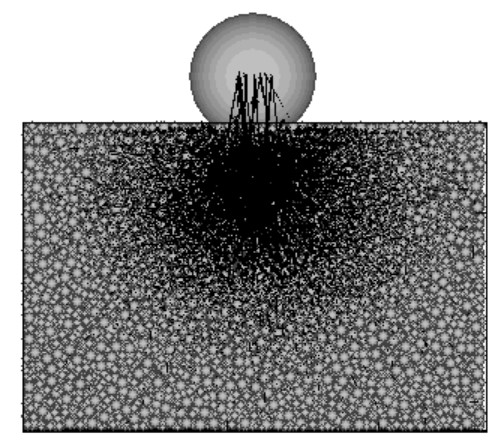
2) Parametric analysis to vary the energy content of the impact, the state of thickening of the material, the inclination of the impact speed and the inclination of the layer.
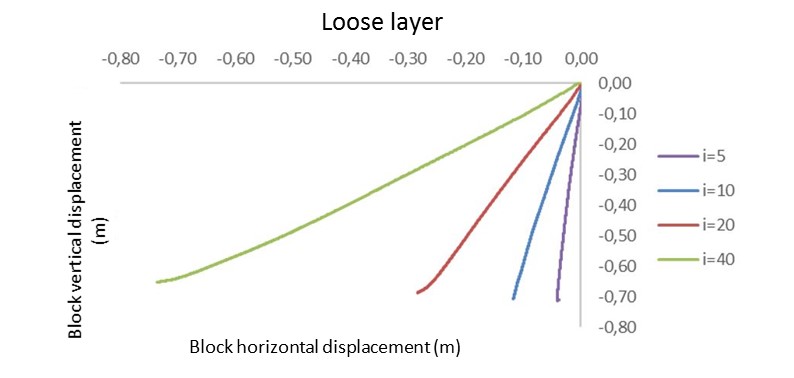
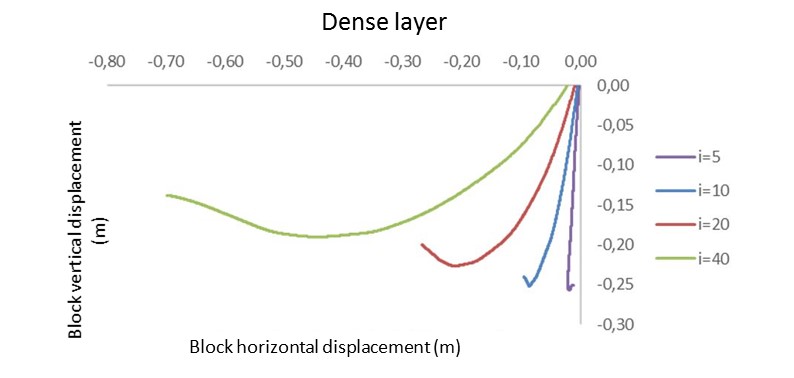
Reological modelling of the impact
The modelling of the impact process has been performed developing a new reological model that allows the description of contact forces taking place between the block and the stratum during their interaction. Such model is a combination of elementary sub-models as shown in the figure below for the case of normal and tangential force/displacement components. Analogous considerations can be done for the rotational component that may play an important role in the blocks propagation during their movement.
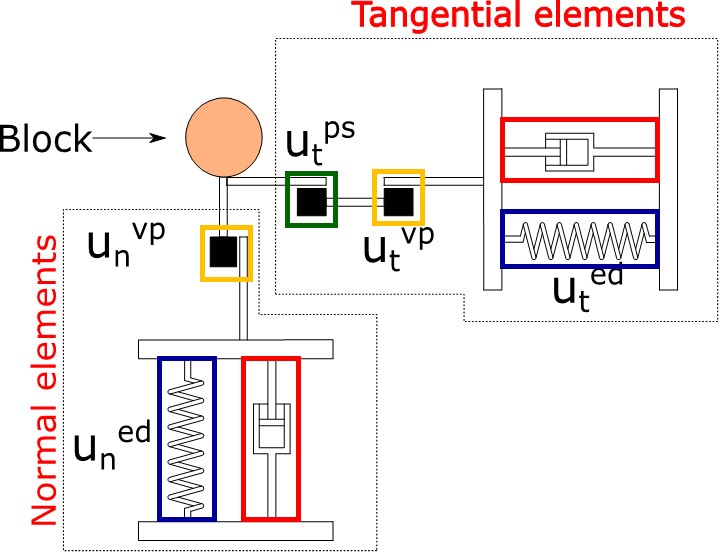
Such modelling approach is very flexible since a suitable modification of the constitutive laws allows taking into account the impacting block geometry, its orientation in the space and the kinematic/dynamical components. Therefore, aside from the spherical shape, typically employed in the impact studies and in practical applications, but very simplified, complex geometries are taken in to consideration in the project. Constitutive laws, simulating prismatic blocks with regular base with prefixed number of edges and ellipsoidal blocks have been implemented. The figures below show the cross section.of a prismatic block with square base, impacting with vertex, and the meridian section of an ellipsoidal blocks which can impact with a generic orientation.
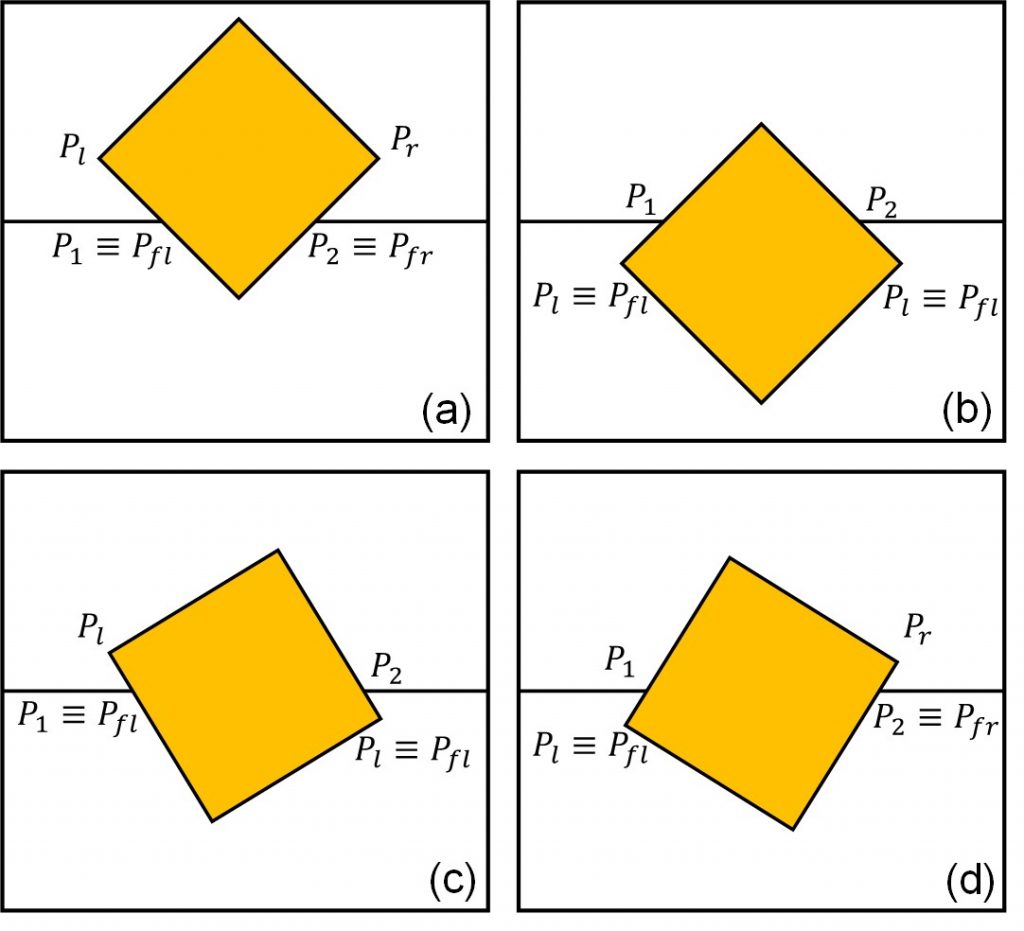
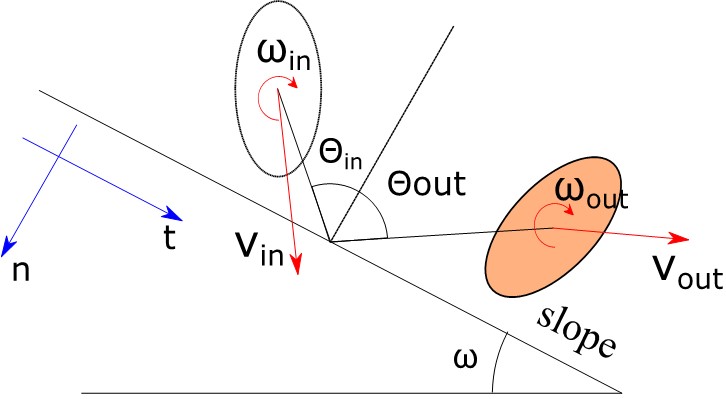
Some results of numerical simulations obtained by means of the generalized rheological model for the case of a slope inclined of 20° are reported, considering a block with both triangular prism and spherical shapes for different impact angles. The results highlight the marked effects due to the block geometry and the impact angle on the mechanism and block motion during the impact and just after the release. Such effects influence significantly the block trajectory and its rotational energy.
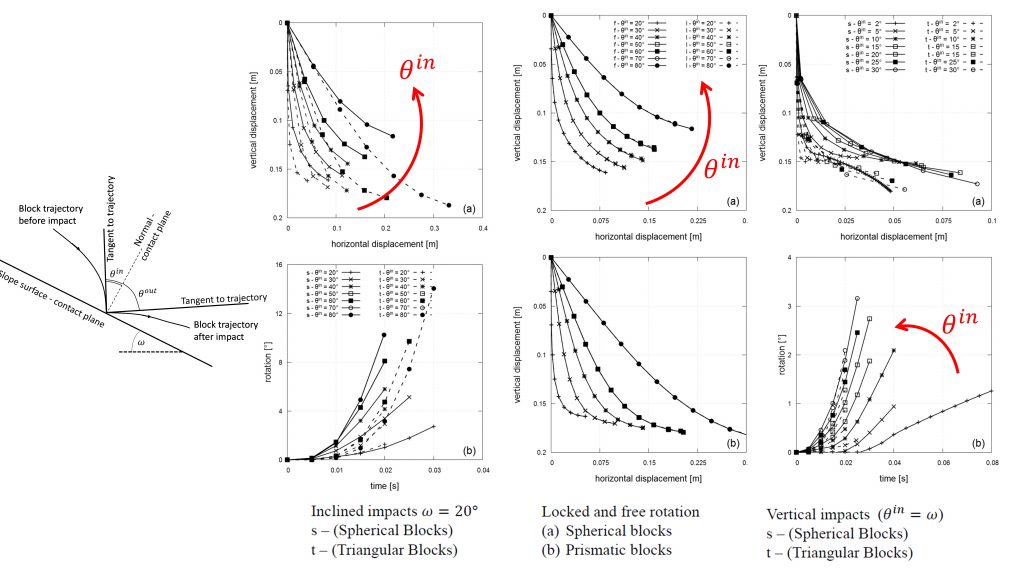
When ellipsoidal blocks are concerned, all possible inclinations are taken into account ranging from vertical to inclined impacts. In case of vertical impacts, the results of two orientations (along the major and minor axes, respectively) are shown for different values of the aspect ratio. In the case of inclined impacts, in addition to the different aspect ratio, the influence of the impact angle is simulated. The results are plotted in the figure below in terms of displacement, vertical force and normal and tangential restitution coefficients associated with that impact conditions.
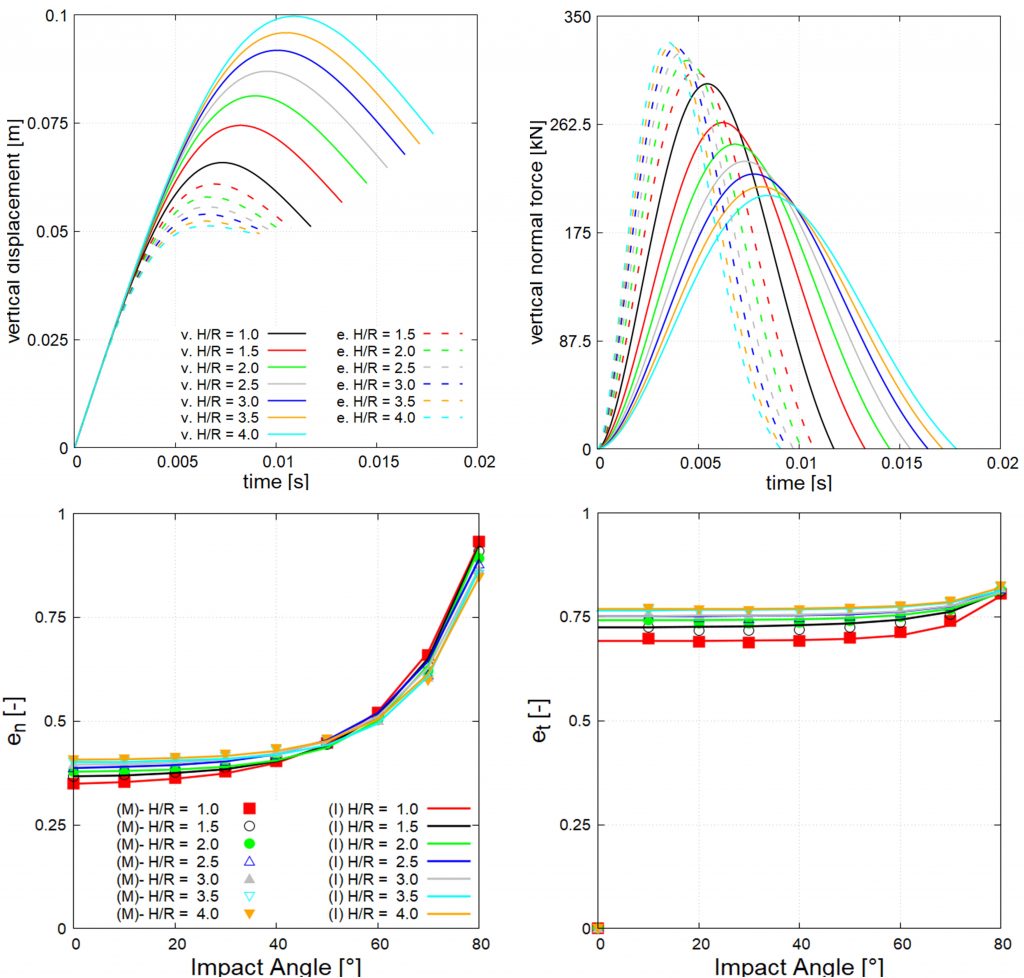
In order to prevent hazardous rockfalls on facilities and settlements, usually some protection structures such as net fences and retaining walls are designed and built. These structures are constructed by soil reinforced with geotextile and geogrid, which allow increasing their slenderness, and to better distribute the force generated by the interaction between the block the reinforced wall. In the figure below the mark generated by the interaction between a block and a retaining wall is shown together with block sinking due to the punching mechanism which, in this case, did not result in the total failure of the building.
To model the impact of the block with a retaining wall, the rheological model developed during the project has been extended by adding other suitable elements that are able to model the retaining wall behaviour and the impact mechanics. The model parameters have been calibrated from data of real scale tests and subsequently employed to study the effects of many parameters on the block trajectory during the impact and the punching mechanism triggered by the impact. The results obtained are shown in the figures below.
In addition to the net fence and the retaining wall, forests have a well-known role in rockfall propagation that has been recognized by many laws issued for land protection. A block may be deviated or stopped during the impact with the tree stems, depending on the characteristics of the movement and on the obstacle. The effects of wooded area depend on the tree density, the stem diameter (representing the maturity of the forest) and type of trees (resistance at impact). In order to evaluate the protective effects of the wood tress, it has been proposed in the project an efficiency coefficient (EEI) according to which the wooded area of Lombardia region, in proximity of infrastructure and inhabitants centres, may be classified and mapped assigning to the trees a protection degree. In the figure below, the obtained results are shown.
The above map is the result of numerical simulations obtained by means free fall code Hy-Stone that takes into account of the tress presence by means of a stochastic method. The figure below shows the passage frequency of blocks in the different zones, considering a prefixed source area (cyan line). The results demonstrate the validity of the simulations since the blocks released within zones bordered by a white line that have been located by mapping previous falling.
